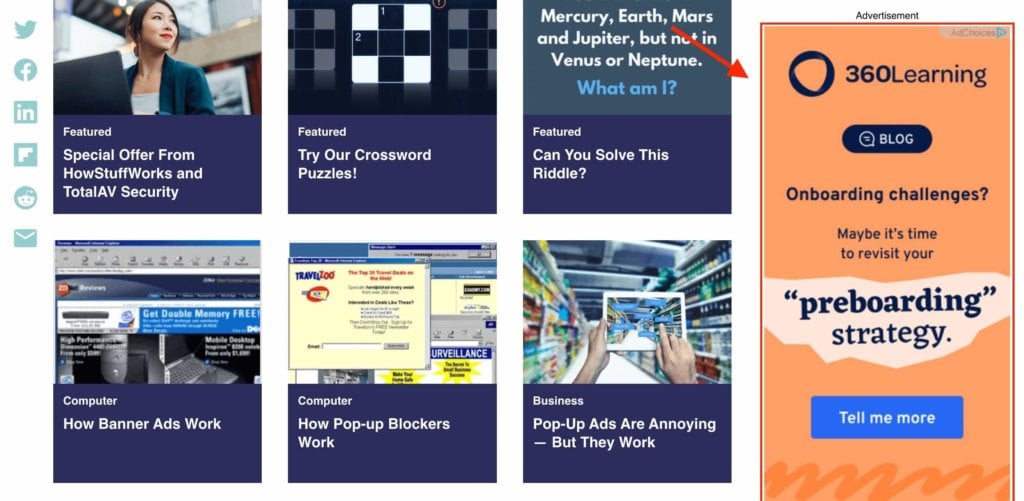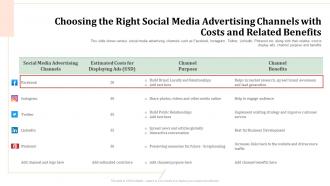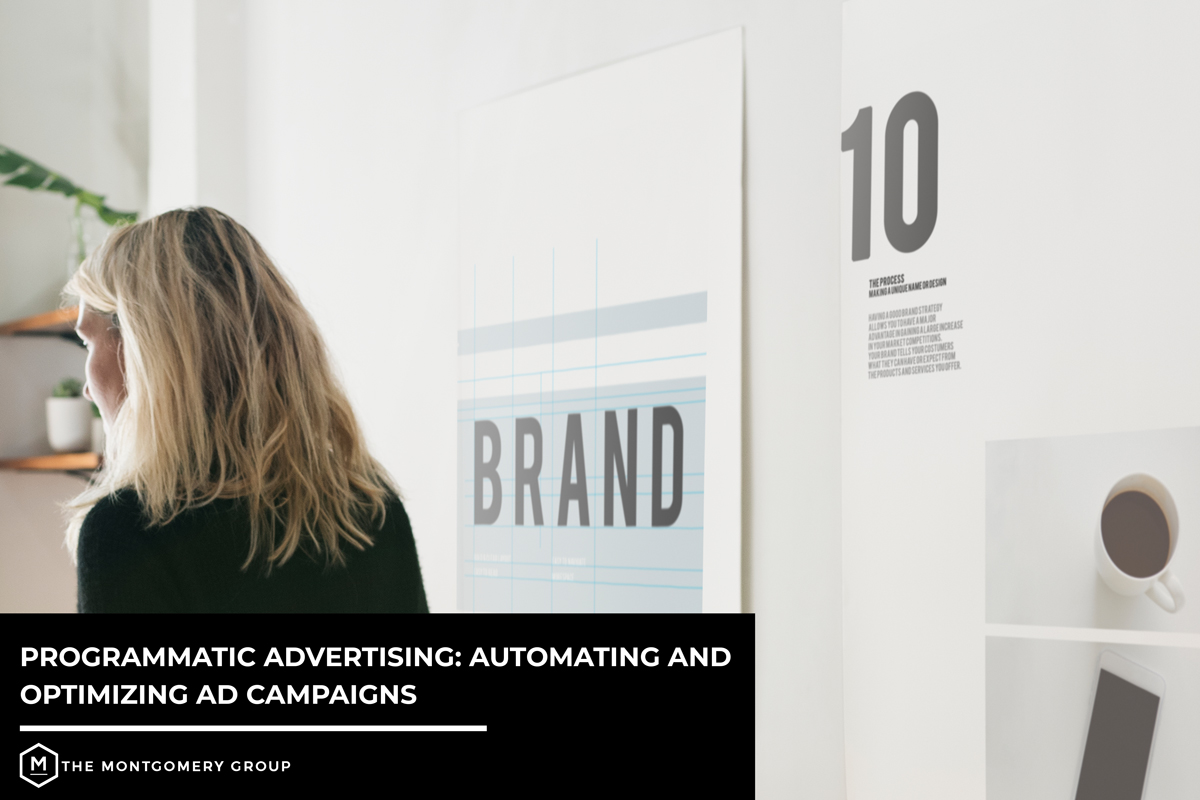Understanding the Fundamentals of Effective Ad Placement
Effective advertising is crucial for businesses to reach their target audience, increase brand awareness, and drive sales. However, with the numerous advertising options available, it can be overwhelming to determine the best approach. To create a successful ad campaign, it is essential to understand the basics of advertising, including the different types of ads, target audiences, and ad formats. This knowledge is crucial for creating a successful ad campaign that resonates with the target audience and achieves the desired results.
There are various types of ads, including display ads, native ads, social media ads, and search engine ads. Each type of ad has its unique characteristics, advantages, and disadvantages. For instance, display ads are visual ads that appear on websites, while native ads are designed to blend in with the content of a website. Social media ads, on the other hand, are ads that appear on social media platforms, such as Facebook and Twitter. Understanding the different types of ads and their characteristics is vital for selecting the most effective ad format for your campaign.
In addition to understanding the different types of ads, it is also essential to identify your target audience. Who are your ideal customers? What are their interests, needs, and pain points? Understanding your target audience is crucial for creating ad copy and visuals that resonate with them. For example, if your target audience is young adults, you may want to use language and imagery that appeals to this demographic.
Another critical aspect of effective ad placement is understanding ad formats. Ad formats refer to the size, shape, and layout of an ad. Different ad formats are suitable for different types of ads and audiences. For instance, banner ads are suitable for display ads, while video ads are suitable for social media platforms. Understanding ad formats is essential for creating ads that are visually appealing and effective.
By understanding the basics of advertising, including the different types of ads, target audiences, and ad formats, businesses can create effective ad campaigns that achieve their desired results. Whether you’re looking to increase brand awareness, drive sales, or generate leads, understanding the fundamentals of effective ad placement is crucial for success. By taking the time to learn about the different types of ads, target audiences, and ad formats, businesses can create ad campaigns that resonate with their target audience and achieve their desired results.
Defining Your Advertising Goals and Objectives
Before launching an ad campaign, it is essential to define clear goals and objectives. This will help guide the entire advertising process, from creating ad copy to measuring success. By setting specific, measurable, achievable, relevant, and time-bound (SMART) goals, businesses can ensure their ad campaign is focused and effective.
The first step in defining advertising goals and objectives is to identify the target audience. Who are the ideal customers? What are their needs, interests, and pain points? Understanding the target audience is crucial for creating ad copy and visuals that resonate with them. For example, if the target audience is young adults, the ad copy and visuals should be tailored to appeal to this demographic.
Once the target audience is identified, the next step is to determine the budget for the ad campaign. This will help guide decisions on ad placement, ad format, and ad frequency. It is essential to allocate a sufficient budget to achieve the desired results. A general rule of thumb is to allocate at least 10% of the overall marketing budget to advertising.
Establishing key performance indicators (KPIs) is also crucial for measuring the success of an ad campaign. KPIs can include metrics such as click-through rates (CTRs), conversion rates, cost per acquisition (CPA), and return on investment (ROI). By tracking these metrics, businesses can evaluate the effectiveness of their ad campaign and make data-driven decisions to optimize it.
When defining advertising goals and objectives, it is also essential to consider the overall marketing strategy. How does the ad campaign fit into the broader marketing plan? What are the long-term goals of the marketing strategy? By aligning the ad campaign with the overall marketing strategy, businesses can ensure a cohesive and effective marketing approach.
Some common advertising goals and objectives include increasing brand awareness, driving website traffic, generating leads, and boosting sales. By setting specific goals and objectives, businesses can create an ad campaign that is tailored to achieve these results. For example, if the goal is to increase brand awareness, the ad campaign may focus on creating eye-catching visuals and compelling ad copy that resonates with the target audience.
By defining clear goals and objectives, businesses can create an ad campaign that is focused, effective, and measurable. This will help ensure a successful ad campaign that achieves the desired results and provides a strong return on investment. Whether you’re looking to increase brand awareness, drive sales, or generate leads, defining clear goals and objectives is essential for creating a successful ad campaign.
Choosing the Right Advertising Channels
With the numerous advertising channels available, selecting the right ones for your ad campaign can be overwhelming. However, by understanding the pros and cons of each channel, you can make informed decisions to achieve your advertising goals. In this article, we will discuss the different advertising channels available, including social media, search engines, and native advertising.
Social media advertising is a popular choice for many businesses. Platforms like Facebook, Twitter, and Instagram offer a wide range of targeting options, allowing you to reach your ideal audience. Social media ads can be used to increase brand awareness, drive website traffic, and generate leads. However, social media advertising can be competitive, and ad prices can be high. To get the most out of social media advertising, it’s essential to create high-quality ad copy and visuals that resonate with your target audience.
Search engine advertising, also known as pay-per-click (PPC) advertising, is another popular choice. Platforms like Google AdWords and Bing Ads allow you to create ads that appear at the top of search engine results pages (SERPs). Search engine ads are ideal for businesses that want to drive website traffic and generate leads. However, search engine advertising can be complex, and ad prices can be high. To get the most out of search engine advertising, it’s essential to create high-quality ad copy and optimize your ads for maximum ROI.
Native advertising is a type of advertising that is designed to blend in with the content of a website or social media platform. Native ads can be used to increase brand awareness, drive website traffic, and generate leads. Native advertising is ideal for businesses that want to reach their target audience in a non-intrusive way. However, native advertising can be challenging to measure, and ad prices can be high. To get the most out of native advertising, it’s essential to create high-quality ad copy and visuals that resonate with your target audience.
When choosing the right advertising channels for your ad campaign, it’s essential to consider your target audience, budget, and advertising goals. By understanding the pros and cons of each channel, you can make informed decisions to achieve your advertising goals. For example, if your target audience is young adults, social media advertising may be an ideal choice. If your target audience is searching for specific keywords, search engine advertising may be an ideal choice.
In addition to considering your target audience, budget, and advertising goals, it’s also essential to consider the ad format and ad placement. Different ad formats, such as display ads, video ads, and native ads, can be used to achieve different advertising goals. Ad placement, such as ad placement on social media platforms or search engine results pages, can also impact the success of your ad campaign.
By choosing the right advertising channels for your ad campaign, you can increase brand awareness, drive website traffic, and generate leads. Whether you’re looking to increase brand awareness, drive sales, or generate leads, selecting the right advertising channels is essential for achieving your advertising goals.
Crafting Compelling Ad Copy and Visuals
Crafting compelling ad copy and visuals is crucial for creating an effective ad campaign. Ad copy and visuals are the first things that potential customers see, and they can make or break the success of an ad campaign. In this article, we will provide tips and best practices for creating effective ad copy and visuals, including headlines, descriptions, images, and videos.
Headlines are one of the most important elements of ad copy. A good headline should be attention-grabbing, clear, and concise. It should also be relevant to the target audience and the product or service being advertised. When crafting a headline, consider using action verbs, questions, or statements that create curiosity. For example, “Get 20% Off Your First Purchase” or “Discover the Secret to Weight Loss” are effective headlines that grab attention and encourage clicks.
Descriptions are another important element of ad copy. A good description should be clear, concise, and relevant to the target audience. It should also provide enough information to encourage clicks and conversions. When crafting a description, consider using bullet points, short paragraphs, and social proof such as customer testimonials. For example, “Our product is designed to help you lose weight fast and safely. With our unique formula, you can expect to lose up to 10 pounds in just one week. But don’t just take our word for it – check out what our satisfied customers have to say.”
Images and videos are also crucial elements of ad copy. They can help to grab attention, convey complex information, and create an emotional connection with the target audience. When using images and videos, consider using high-quality visuals that are relevant to the product or service being advertised. For example, a fashion brand might use images of models wearing their clothing, while a tech company might use videos to demonstrate the features of their product.
Color is also an important element of ad copy. Different colors can evoke different emotions and reactions from the target audience. For example, red is often associated with energy and excitement, while blue is often associated with trust and reliability. When choosing colors for your ad copy, consider using colors that are consistent with your brand identity and that appeal to your target audience.
Finally, consider using social proof such as customer testimonials and reviews to create trust and credibility with the target audience. Social proof can help to increase conversions and improve the overall effectiveness of an ad campaign. For example, “Our product has been rated 5 stars by over 1,000 satisfied customers. Check out what they have to say about our product.”
By following these tips and best practices, you can create effective ad copy and visuals that grab attention, convey complex information, and create an emotional connection with the target audience. Remember to always test and optimize your ad copy and visuals to ensure the best possible results.
Optimizing Your Ad Campaign for Maximum ROI
Optimizing your ad campaign for maximum return on investment (ROI) is crucial for achieving success in advertising. By using data and analytics to track performance, identify areas for improvement, and make data-driven decisions, you can optimize your ad campaign to achieve maximum ROI. In this article, we will discuss the importance of optimizing your ad campaign and provide tips on how to do it effectively.
One of the most important steps in optimizing your ad campaign is to track performance. This can be done by using metrics such as click-through rates (CTRs), conversion rates, and cost per acquisition (CPA). By tracking these metrics, you can identify areas for improvement and make data-driven decisions to optimize your ad campaign. For example, if you notice that your CTR is low, you may want to adjust your ad copy or targeting to improve performance.
Another important step in optimizing your ad campaign is to identify areas for improvement. This can be done by analyzing your data and identifying trends and patterns. For example, if you notice that your ad campaign is performing well on certain days of the week or at certain times of the day, you may want to adjust your targeting or ad scheduling to take advantage of these trends.
Once you have identified areas for improvement, you can make data-driven decisions to optimize your ad campaign. This can include adjusting your ad copy, targeting, or ad scheduling to improve performance. For example, if you notice that your ad campaign is performing well on Facebook, you may want to increase your budget on this platform or adjust your targeting to reach more users.
It’s also important to use A/B testing to optimize your ad campaign. A/B testing involves creating two versions of an ad and testing them against each other to see which one performs better. This can help you identify which elements of your ad campaign are most effective and make data-driven decisions to optimize your ad campaign.
In addition to using data and analytics to optimize your ad campaign, it’s also important to stay up-to-date with the latest trends and best practices in advertising. This can include attending industry events, reading industry publications, and following industry leaders on social media. By staying informed, you can stay ahead of the competition and optimize your ad campaign for maximum ROI.
Finally, it’s also important to consider the long-term goals of your ad campaign when optimizing for maximum ROI. While it’s tempting to focus on short-term gains, it’s also important to consider the long-term impact of your ad campaign on your business. By taking a long-term approach, you can optimize your ad campaign to achieve maximum ROI and drive long-term success for your business.
Common Mistakes to Avoid in Ad Placement
When it comes to ad placement, there are several common mistakes that can lead to a failed ad campaign. In this article, we will discuss some of the most common mistakes to avoid when placing ads, including poor targeting, inadequate budgeting, and ineffective ad copy.
Poor targeting is one of the most common mistakes made in ad placement. This can include targeting the wrong audience, using the wrong keywords, or failing to exclude irrelevant audiences. To avoid poor targeting, it’s essential to conduct thorough market research and understand your target audience’s demographics, interests, and behaviors. By targeting the right audience, you can increase the effectiveness of your ad campaign and reduce waste.
Inadequate budgeting is another common mistake made in ad placement. This can include setting a budget that is too low or too high, failing to allocate budget to the right channels, or not monitoring budget performance regularly. To avoid inadequate budgeting, it’s essential to set a realistic budget based on your advertising goals and to regularly monitor budget performance to ensure that you are getting the best possible return on investment.
Ineffective ad copy is also a common mistake made in ad placement. This can include using ad copy that is not relevant to the target audience, failing to include a clear call-to-action, or using ad copy that is not visually appealing. To avoid ineffective ad copy, it’s essential to create ad copy that is relevant, clear, and visually appealing. By using attention-grabbing headlines, clear messaging, and eye-catching visuals, you can increase the effectiveness of your ad campaign and drive more conversions.
Another common mistake made in ad placement is failing to optimize ad campaigns regularly. This can include failing to monitor ad performance regularly, not making adjustments to ad targeting or budgeting, or not testing different ad creatives. To avoid failing to optimize ad campaigns, it’s essential to regularly monitor ad performance and make adjustments as needed. By testing different ad creatives, targeting options, and budgeting strategies, you can optimize your ad campaign for maximum ROI.
Finally, failing to measure and evaluate ad performance is also a common mistake made in ad placement. This can include failing to track key metrics such as click-through rates, conversion rates, and cost per acquisition, or not using data to inform ad placement decisions. To avoid failing to measure and evaluate ad performance, it’s essential to track key metrics regularly and use data to inform ad placement decisions. By using data to optimize ad campaigns, you can increase the effectiveness of your ad campaign and drive more conversions.
By avoiding these common mistakes, you can increase the effectiveness of your ad campaign and drive more conversions. Remember to conduct thorough market research, set a realistic budget, create effective ad copy, optimize ad campaigns regularly, and measure and evaluate ad performance regularly. By following these best practices, you can create a successful ad campaign that drives real results for your business.
Measuring and Evaluating Ad Performance
Measuring and evaluating ad performance is crucial for determining the success of an ad campaign. By tracking key metrics such as click-through rates (CTRs), conversion rates, and cost per acquisition (CPA), you can evaluate ad performance and make data-driven decisions to optimize your ad campaign. In this article, we will discuss the importance of measuring and evaluating ad performance and provide tips on how to do it effectively.
One of the most important metrics to track when measuring ad performance is CTR. CTR measures the percentage of users who click on an ad after seeing it. A high CTR indicates that an ad is relevant and appealing to the target audience. To improve CTR, consider using attention-grabbing headlines, clear messaging, and eye-catching visuals.
Conversion rate is another important metric to track when measuring ad performance. Conversion rate measures the percentage of users who complete a desired action after clicking on an ad. A high conversion rate indicates that an ad is effective at driving conversions. To improve conversion rate, consider using clear and compelling ad copy, optimizing landing pages, and streamlining the conversion process.
CPA is also an important metric to track when measuring ad performance. CPA measures the cost of acquiring one customer or conversion. A low CPA indicates that an ad campaign is cost-effective. To improve CPA, consider optimizing ad targeting, ad copy, and bidding strategies.
In addition to tracking these metrics, it’s also important to use data and analytics to evaluate ad performance. By analyzing data on ad performance, you can identify areas for improvement and make data-driven decisions to optimize your ad campaign. Consider using tools such as Google Analytics or Facebook Ads Manager to track and analyze ad performance.
When evaluating ad performance, it’s also important to consider the overall goals and objectives of the ad campaign. Are you trying to drive conversions, increase brand awareness, or generate leads? By considering the overall goals and objectives of the ad campaign, you can evaluate ad performance in context and make data-driven decisions to optimize your ad campaign.
Finally, it’s also important to regularly review and adjust your ad campaign based on performance data. By regularly reviewing and adjusting your ad campaign, you can ensure that it remains effective and optimized over time. Consider setting regular check-ins to review ad performance and make adjustments as needed.
By measuring and evaluating ad performance, you can optimize your ad campaign for maximum ROI and drive real results for your business. Remember to track key metrics such as CTR, conversion rate, and CPA, use data and analytics to evaluate ad performance, and regularly review and adjust your ad campaign based on performance data.
Scaling Your Ad Campaign for Long-Term Success
Scaling your ad campaign for long-term success requires careful planning, execution, and optimization. By using data and analytics to identify opportunities for growth, optimizing your ad campaign for maximum ROI, and ensuring a successful ad campaign over time, you can achieve long-term success and drive real results for your business. In this article, we will discuss tips and best practices for scaling your ad campaign for long-term success.
One of the most important steps in scaling your ad campaign is to use data and analytics to identify opportunities for growth. By analyzing data on ad performance, you can identify areas for improvement and make data-driven decisions to optimize your ad campaign. Consider using tools such as Google Analytics or Facebook Ads Manager to track and analyze ad performance.
Another important step in scaling your ad campaign is to optimize your ad campaign for maximum ROI. By optimizing your ad targeting, ad copy, and bidding strategies, you can increase the effectiveness of your ad campaign and drive more conversions. Consider using A/B testing to optimize ad copy and targeting, and using data to inform bidding decisions.
In addition to optimizing your ad campaign for maximum ROI, it’s also important to ensure a successful ad campaign over time. By regularly reviewing and adjusting your ad campaign based on performance data, you can ensure that it remains effective and optimized over time. Consider setting regular check-ins to review ad performance and make adjustments as needed.
When scaling your ad campaign, it’s also important to consider the overall goals and objectives of the campaign. Are you trying to drive conversions, increase brand awareness, or generate leads? By considering the overall goals and objectives of the campaign, you can ensure that your ad campaign is aligned with your business objectives and is driving real results.
Finally, it’s also important to stay up-to-date with the latest trends and best practices in advertising. By staying informed, you can stay ahead of the competition and ensure that your ad campaign is optimized for maximum ROI. Consider attending industry events, reading industry publications, and following industry leaders on social media to stay informed.
By following these tips and best practices, you can scale your ad campaign for long-term success and drive real results for your business. Remember to use data and analytics to identify opportunities for growth, optimize your ad campaign for maximum ROI, and ensure a successful ad campaign over time.
Scaling your ad campaign for long-term success requires careful planning, execution, and optimization. By using data and analytics to identify opportunities for growth, optimizing your ad campaign for maximum ROI, and ensuring a successful ad campaign over time, you can achieve long-term success and drive real results for your business.








